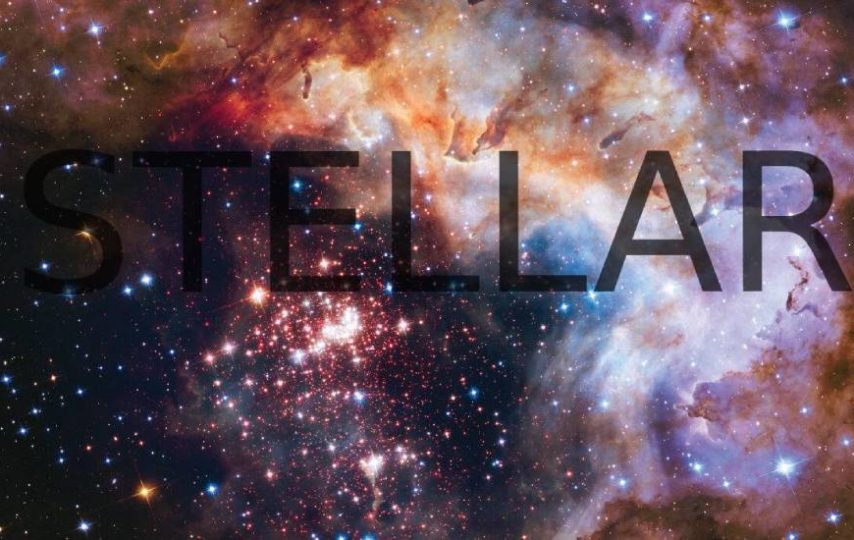Cryptocurrencies are different, some are created to replace fiat money and displace all competitors from the market, while others help to make multi-currency transactions around the world. For example, XLM cryptocurrency platform Stellar, thanks to its unique technology, is used as a “bridge” between different digital coins when direct exchange is not available.
Stellar lumens cryptocurrency allows instant transactions with low fees. The project is quite popular in business circles, its main sponsor is the American company Stripe.
Contents
- The history of the project
- Technical features of stellar
- Blockchain stellar
- Mining XLM
- Buying and selling coins
- Advantages and disadvantages
- Conclusion
The history of the project
Official website of the coin – https://www.stellar.org
The first banking-oriented blockchain startup called Ripple (XRP) was launched in 2012. The cheap and practical cryptocurrency attracted the attention of investors and many predicted a great future for it. XPR is still present in the market and is even in the top ten, but still the project of Ripple Labs is far from perfect, especially in terms of decentralization.
Blockchain engineers liked the idea of combining banks, payment systems and individuals into one platform, and after Ripple developers published the XRP source code online under community pressure in 2014, a hardfork called Stellar coin (XLM) emerged. The cryptocurrency switched to its own protocol the following year. The author of the hardfork, Jed McCaleb, named the internal coin of the Stellar system – Lumens.
The cryptocurrency has received a lot of favorable reviews, it has even been called the “Ripple of the healthy man.” If you want, you can read a detailed comparison of the two cryptocurrencies, and decide which is better. By now, though, the Stellar network has still not grown to the scale of its competitor.
The founder of Stellar Lumens, who worked at Ripple Labs for many years, immediately stated that the project has no commercial goals. The system is controlled by the independent Stellar Development Foundation. XLM is open source, and any programmer can participate in upgrading the platform.
The leadership of the Stellar Development Foundation includes
- Patrick Collison, CEO of Stripe;
- Nicolas Barry, M.S. in computer science and mathematics and a contributor to computer systems development for Microsoft and Salesforce;
- David Mazieres, a computer security specialist and co-leader of the Secure Computer Systems research group.
Technical features of Stellar
The Ripple consensus mechanism, of which the Stellar Lumens cryptocurrency was originally a fork, uses “Byzantine Fault Tolerance” (BFT). Its point is to keep the network running even if some of its nodes are shut down or hijacked by hackers. Ripple solves this problem by having the main node fully control the validators, which goes against Satoshi Nakamoto’s idea of decentralizing blockchain networks.
Moving to their own platform, XLM cryptocurrency developers changed the consensus mechanism from BFT to SCP (Stellar Consensus protocol).
On a primary level, Stellar is an ownership tracking system. Like accountants for centuries, it uses a ledger to do this, but the innovation of Stellar is that there is no real accountant. But there is a network of independent nodes, each checking and rechecking the work of the others. Stellar is a decentralized system, meaning that no one can stop the network or secretly configure it to their liking, but even without central authority, the ledgers are checked and updated every five seconds.
A unique algorithm called the Stellar Consensus Protocol (SCP) keeps everything in sync. There are many ways to reach consensus in a decentralized system – the visionary Proof of Work method used in the Bitcoin network was invented first and is still the best known. But like many early projects, PoW left room for improvement. SCP aims to be better by being customizable, fast, and highly energy efficient.
Right above that baseline is a powerful API, so you don’t need to understand the intricacies of distributed consensus to build on Stellar. Simple, well-documented features allow you to move new digital money in a familiar pattern. It’s very easy to trade tokens between accounts, create markets and issue assets.
- To avoid the loss of decentralization, certain measures were taken at the launch of the Stellar blockchain ecosystem.
- A non-profit foundation, the Stellar Development Foundation, was founded to develop the system; its founders are not allowed to receive dividends for participating in its activities, or to sell its shares.
- Open Source. At the time of launch, XLM functioned with the Ripple protocol, and then the team developed its own Stellar protocol. SDF (Stellar Development Foundation) is the guarantor of free access to the source code.
- Information about the activities of the project team is published on the official website and social media pages.
- In the first stage, it was immediately planned how many tokens will be generated at the launch of the network (100 billion), and how many will be issued to create artificial inflation (1% per year). And also a budget for the development of the fund (5% of the total issue) was drawn up. It is envisaged that 25% of all coins will go to non-profit structures.
According to the restrictive agreement, holders of large amounts of Lumens are not allowed to sell coins for 5 years.
Blockchain Stellar
The computers that run the core Stellar software and therefore publish and check the ledger are called nodes. Thus, when you send a euro token to someone in an application built by Stellar, the nodes check the size of the debit and credit, and they all have to come to a consensus. The current Stellar network is verified by hundreds of nodes around the globe. The locations and communication protocols of complete nodes are public information. Anyone can install Stellar software to earn money by participating in the maintenance of the network.
The software used to power the Stellar network is called Stellar Core, and it can be run in a variety of ways depending on the user’s needs. Specifically, nodes can be configured as “Watchers,” “Archiver,” “Basic Validators,” or “Full Validators.” Watchers can only send transactions. Full Validators, on the other hand, participate in the Stellar Consensus protocol by voting on which transactions should be considered valid and keeping an archive of that history for other nodes.
After a Stellar crypto-network user has independently started a node (transaction validation node), he must select trusted nodes with which he is willing to cooperate. Together, they form a “faction” that, once it has a certain number of members, can become a “parliamentary majority” that controls the security of the system. The software code includes a complete freezing of the Stellar blockchain when nodes behave inappropriately.
The process of executing transactions and generating new Stellar Lumens cryptocurrency blocks is as follows:
- The sender forms a transaction and it is immediately taken to work by one of the active nodes.
- The node checks the sender’s wallet balance to avoid double spending, and passes the transaction to the next node.
- The last node involved in the verification writes the data to the blockchain, which is synchronized with the other copies.
The transaction is considered complete if 80% of the validators agree within 5 seconds. The fee is distributed to all the nodes that participated in the transaction processing.
Cross-currency transfers can be performed in the Stellar cryptosystem. For example, when sending money to Argentina, you can buy lumens for dollars from your credit card, the recipient will receive local pesos. The same goes for any cryptocurrency, for example, if you send Monero the recipient gets Dash, or any desired coin.
This uses a system of anchors (intermediaries) accepting any money on deposit and issuing credit in the appropriate currency, which you can then withdraw by paying for the transaction in Lumens. The Stellar blockchain stores information about the exchange of all currency pairs. The ratio of the value of certain digital assets is available in the order book, which allows you to easily convert them during financial transactions. Based on Stellar, decentralized applications are created, ICOs are conducted and smart contracts are executed. Examples of successful ICOs on the XLM platform include projects:
- Kin;
- Mobius;
- Smartlands.
The capabilities of Stellar technology are not as extensive as the Ethereum virtual machine, it is suitable for running uncomplicated dapps, and the developers admit this.
Stellar Lumens cryptocurrency statistics:
- XLM rate is $0.2575;
- Return on investment in the crypto network – 20,081%;
- Market rank – 26;
- Capitalization – $6 351 842 835;
- Daily turnover – $544 140 231;
- Circulating Supply – 24 642 040 013 XLM;
- Total supply – 50 001 806 812 XLM.
Data taken from https://coinmarketcap.com/ru/currencies/stellar/.
The PoW consensus algorithm is not supported in Stellar. Mining Lumens cryptocurrency on computing equipment is not possible, blocks are created by nodes.
Buying and selling coins
In January 2018, the price of Stellar Lumens reached an all-time high of $0.84. Today, the rate is much lower, as of 12/14/2021, 1 XLM is worth about $0.26. Unlike Bitcoin or Ether, Lumens is stomping around.
Stellar Lumens (XML) is a popular digital asset with 250 trading venues.
When making a transaction, pay attention to the Stellar exchange rate and the minimum transaction threshold. It may vary significantly at different exchanges. Liquidity is one of the main advantages of XLM crypto.
For trading and buying coins, we recommend using the popular Binance exchange. After registering and setting up an account, you will have access to a wide range of services and tools. To buy cryptocurrency from your card, verify your identity and top up your balance.
Available trading pairs:
- XLM/BTC
- XLM/USDT
- XLM/USD
- XLM/BUSD
- XLM/ETH
- XLM/EUR
- XLM/BNB
Advantages and disadvantages
Stellar was meant to be a powerful tool for making cross-border payments anywhere in the world. The system combines banking tools derived from Ripple and its own decentralized protocol.
The main advantages of Stellar are:
- High transaction processing speed – unlike the first Bitcoin cryptocurrency, in Stellar the transfer is sent immediately to the validator. The money is credited to the recipient’s account 5 seconds after the payment is created;
- Low energy consumption – no mining, thanks to the implementation of the Stellar Consensus Protocol, the transaction verification process on the Stellar network is more energy efficient than the Proof-of-Work (PoW) consensus algorithm;
- Easy access – XLM can be used for blockchain transactions in states where virtual assets are little known or banned by authorities.
Disadvantages of Stellar:
- Imperfect security – At any suspicion of a hacker attack, the network hangs;
- Low profitability of node maintenance;
- Limited capacity for decentralized applications.
Most often the services of Stellar are used by companies operating in underdeveloped countries in Africa, the exception is the IT giant IBM, which began cooperating with Stellar, in 2017.
It is easier and cheaper to launch an ICO campaign on the specialized XLM platform than on Ethereum, and several young blockchain projects have already taken advantage of this. However, they do not represent serious value yet.
Conclusion
Predictions of Stellar cryptocurrency have both positive and negative, the future depends on the competitiveness of the project.
Cheap and fast to make transfers in any currency – a very popular service, and in this niche cryptocurrency XLM beyond competition. The project is actively developing and the team introduces new technologies and works to eliminate deficiencies.
In 2018, the decentralized trading platform Stellar x, where the cryptocurrency is easily exchanged for another digital asset, was launched. The list of Stellar Development Foundation’s partners is growing all the time. Shariyah Review Bureau (SRB) recognized that Stellar Lumens protocol complies with Islamic principles, which enables Stellar to provide services to citizens of the Gulf and South-East Asia
The success of XLM is quite high, but still Ripple is ahead of its fork in the technology race, while Bitcoin, Ethereum and Dash networks are more widespread. Weak marketing policy, lack of an official wallet and ill-conceived security system are the main factors of Stellar’s low popularity.
About Author
Jamie E. Martinez
I’m an MBA graduate of the UCLA Anderson School of Management and currently writing a lot about blockchain, cryptocurrencies, and modern digital technologies for business. Follow me on Linkedin.



